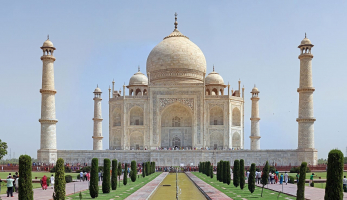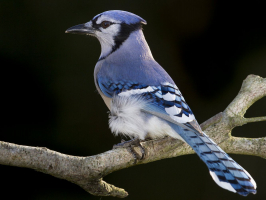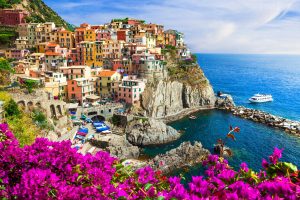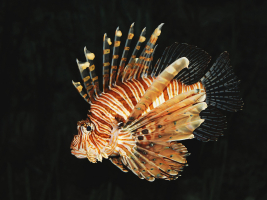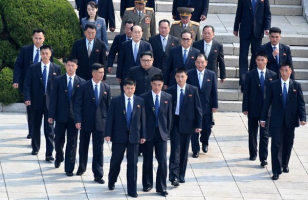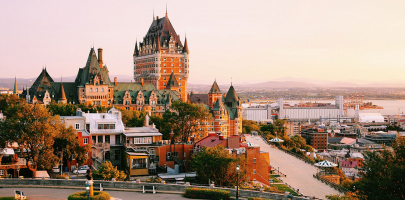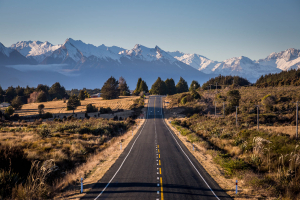Top 14 Most Famous Bridges In The World
Bridges have long been a practical necessity for civilization, but many of them also serve as pieces of structural artwork. Some of the world’s greatest ... read more...architects have devoted their careers to creating incredible works of art through bridge structures across the world’s most well-known rivers or other bodies of water. In this article, we will examine the most famous bridges in the world, as well as the architects who made them and some notable details about their lives and careers.
-
San Francisco’s Golden Gate Bridge is widely recognized as one of the most iconic structures in the world. The Golden Gate Bridge is a suspension bridge spanning the Golden Gate, the strait between San Francisco and Marin County to the north. The masterwork of architect Joseph B. Strauss, whose statue graces the southern observation deck, the bridge took seven years to build and was completed in 1937.
The Golden Gate Bridge was designed by famous engineer Joseph Strauss in 1917, but it took many years for funding to be approved and all of the parts of the project to come together. When it was built, the Golden Gate Bridge had the longest suspension bridge span in the world, and it has since become one of the most famous tourist attractions in San Francisco and California. Since its completion, the span length has been surpassed by eight other bridges. The bridge's famous red-orange color was chosen particularly to make the bridge more apparent through the dense fog that frequently shrouds it.
The Golden Gate Bridge in San Francisco, which is already almost 75 years old, is undoubtedly the most recognizable bridge in the world. While the industrial period suspension bridge design may not excite everyone, it is undeniable that the San Francisco we know today would not be the same without its skyline being graced by this beauty.
Location: San Francisco, United States
Architect: Joseph Strauss
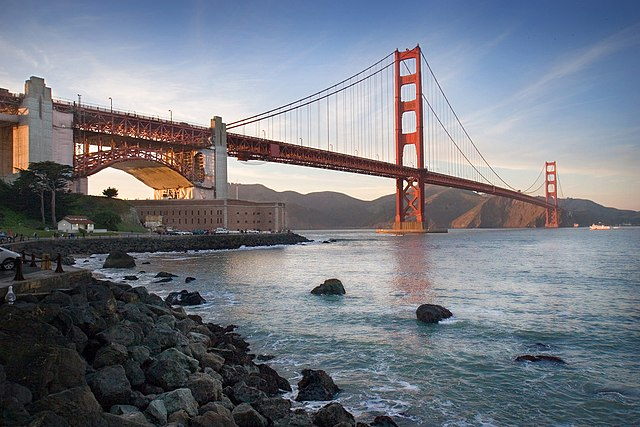
Wikipedia 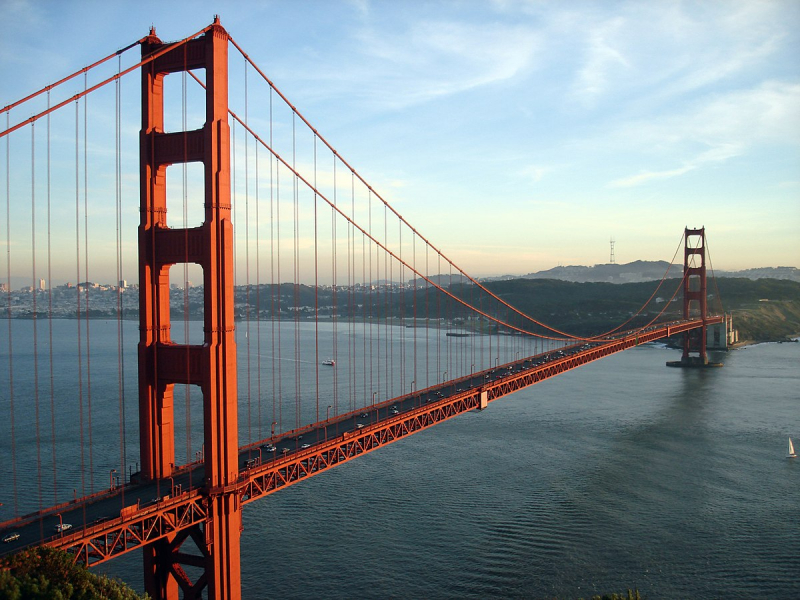
Wikipedia -
The Tower Bridge, a hybrid bascule and suspension bridge in London, England, that spans the River Thames, was inaugurated by The Prince of Wales on June 30, 1894. It is one of the most famous sights in a city that is rife with famous landmarks. One of the oldest bridges in the ancient city of London is this one, which is frequently referred to as the Tower of London.
Its design incorporates a stone foundation laid by Edward VII, Prince of Wales, in 1886. The Tower Bridge was designed in the late 1800s by master architect Horace Jones, and construction on the stone foundation and installation of the bridge's beams began in 1894.
It is regarded as one of the most important sites in London and is frequently the subject of postcards or companies located in the city. At the conclusion of the Hollywood blockbuster "Sherlock Holmes," one of the final sequences is played out on the bridge.
The bridge was first opened in the summer of 1894 and traffic across the massive 800-foot structure was relatively moderate for the first few decades. Once automobiles began to be commonplace in England, the bridge’s design was able to accommodate the extra weight quite easily. It had been repaired after a bomb destroyed part of the center section early in World War II, but it has stood the test of time for more than a century.
Location: London, England
Architect: Horace Jones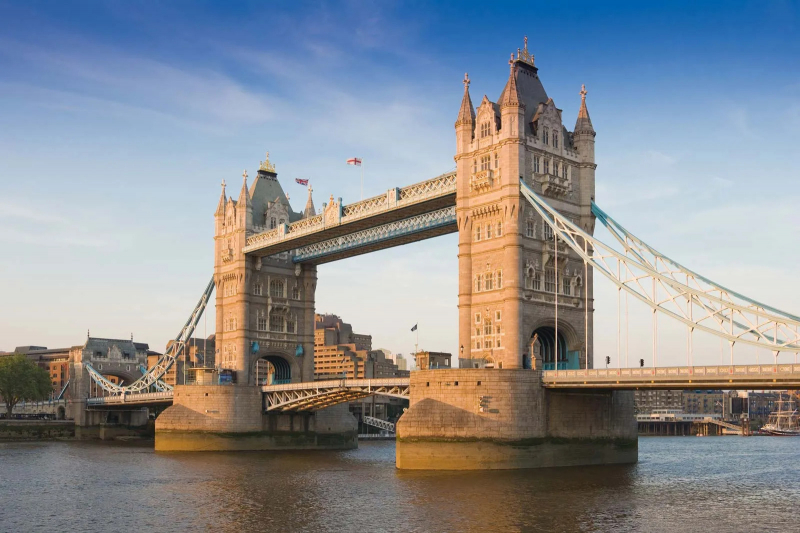
Encyclopedia Britannica 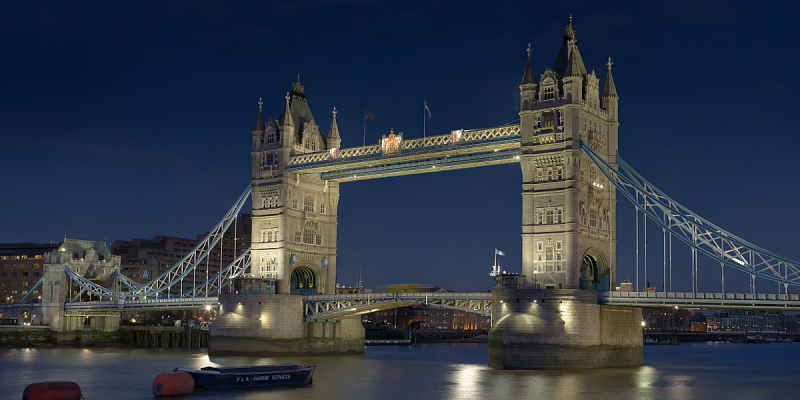
Wikipedia -
A Medieval bridge over the Arno River, the Ponte Vecchio is mainly known for its shops of jewelers, art dealers, and souvenir sellers and for being Europe's oldest stone, closed-spandrel segmental arch bridge. Regardless, the Ponte Vecchio Bridge is gorgeous and has a rich history dating back to the time of the Romans, and it’s certainly one that deserves to be mentioned among the most well-known bridges in the world. It stretches across the Arno River in Florence, Italy, and is among the oldest bridges that are still standing from before the Industrial Revolution.
According to historians, the bridge was originally planned by Taddeo Gaddi, a notable architect in Italy during the medieval period. The Ponte Vecchio is thought to have been built before 1,000 A.D., and there is evidence of its mention in old documents dating back to 996 A.D., as well as others noting that it was destroyed and rebuilt after a catastrophic flood in 1117 A.D.
Today, the Ponte Vecchio is virtually unchanged from when it was rebuilt around 1345. It is composed of three segmented arches, with a 30-meter-long main arch in the center.
Location: Florence, Italy
Architect: Taddeo Gaddi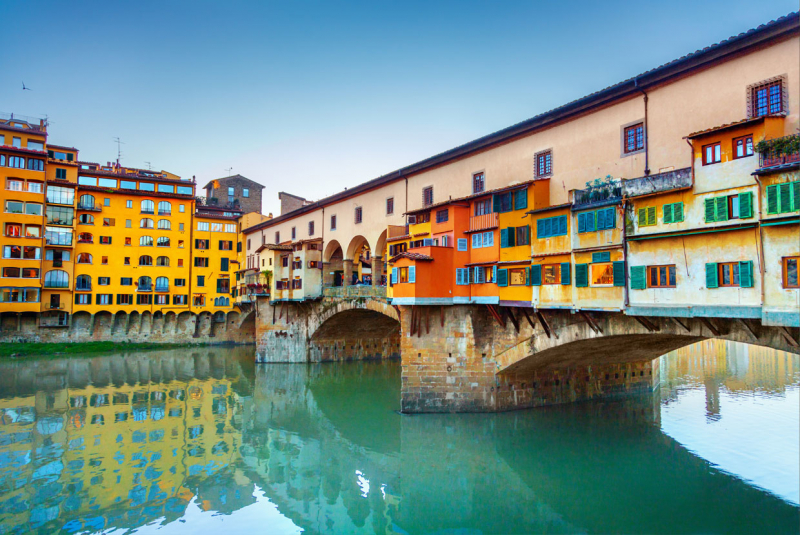
Italian dual citizenship 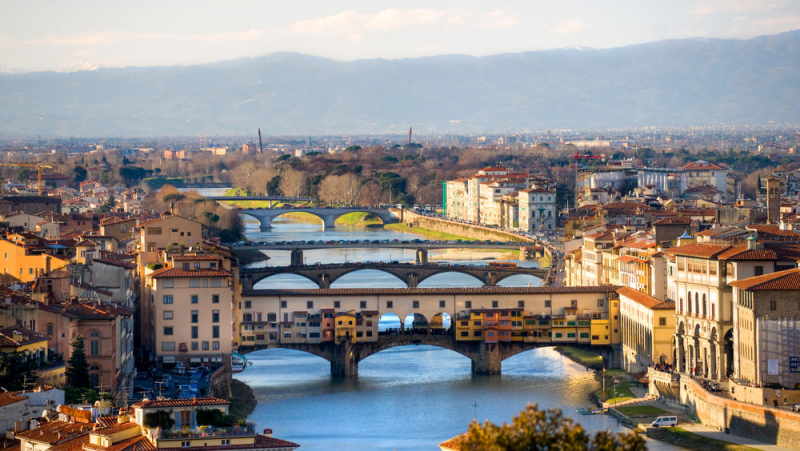
Ciao Florence -
The Millau Viaduct is an enormous cable-stayed road bridge that spans the valley of the river Tarn near Millau in southern France. It is the tallest vehicular bridge in the world, with the highest pylon’s summit at 343 meters (1,125 ft) — slightly taller than the Eiffel Tower. The Millau Viaduct is a massive, sprawling structure that sits over the river Tarn and crosses the Gorge Valley in Italy.
It was created by the well-known Italian engineer and design expert, Michel Virlogeux, who worked alongside a team of architects to plan and build the bridge. The bridge is noteworthy in both height and length because it was originally meant to be one of the only ways to cross the enormous valley without having to follow the meandering roads that crisscross it.
The Millau Viaduct is the world's tallest bridge, standing at 1,104 feet, and spanning more than 8,070 feet across the valley as of 2022. The concrete and steel frame is designed to support a large amount of weight, and experts predict it will last at least 120 years in its current configuration.
Location: Tran Valley, France
Architect: Michel Virlogeux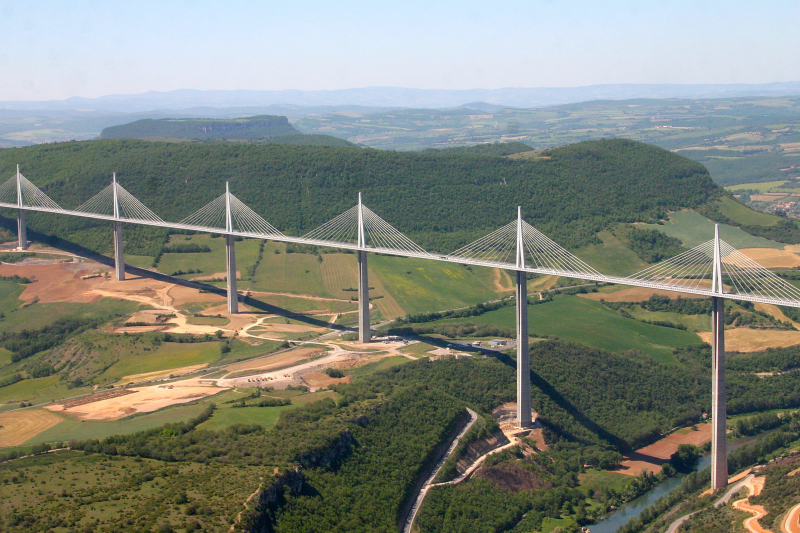
Wikipedia 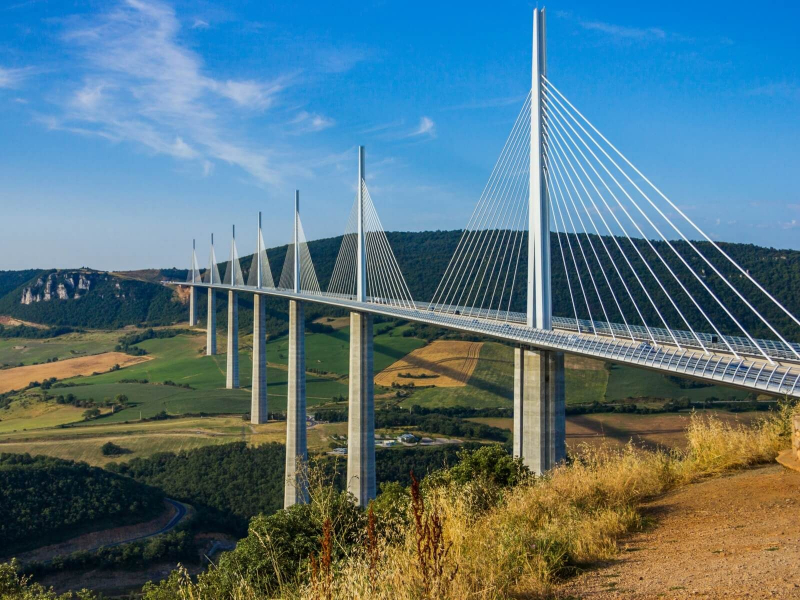
Join Us in France Travel Podcast -
The iconic Brooklyn Bridge is another very large bridge that also serves as a landmark construction for the city in which it is located. The bridge, which towers above Manhattan's East River, is regarded as one of the city's must-see attractions, attracting millions of people each year.
Its distinctive design is a Suspension/Cable-stay Hybrid bridge, and its Neo-Gothic stone towers are among the most famous works of architecture in New York City.
The Brooklyn Bridge was originally designed by John A. Roebling, a brilliant engineer who also passed the project on to his son, Washington Roebling, who later completed the design and assisted in the construction. Construction began on the Brooklyn Bridge in 1870 and it wasn’t completed for another 23 years in 1883. It stretches more than 6,000 feet across the East River and sees more than 120,000 vehicles crossing the bridge each day. The suspension bridge is held together with many tons of steel, concrete, and cable and has undergone at least 3 major renovations since it opened more than a century ago.
The Brooklyn Bridge has been the site of everything from famous and deadly stunts and terrorist attacks to arrests and even banquets and anniversary celebrations.Location: New York City, United States
Architect: John A. Roebling, Washington Roebling
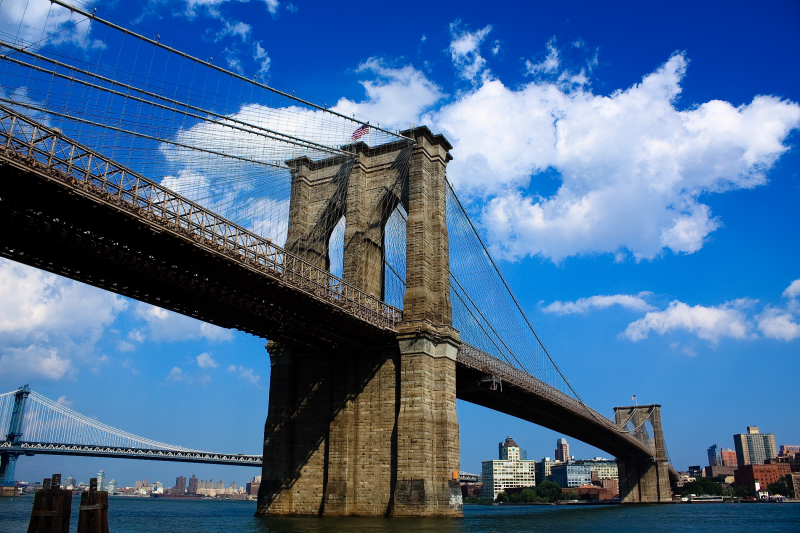
Wikipedia 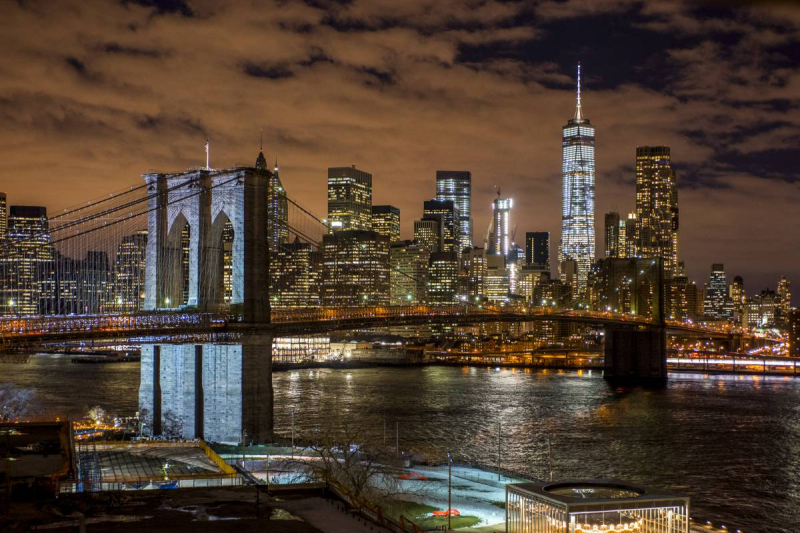
NYCgo.com -
One of the most famous bridge structures in Australia is the Sydney Harbour Bridge. It stretches over the Sydney Harbour, which is formally known as Port Jackson, and is another historic landmark among the many different structures that make Sydney a distinct city. The bridge is one of the largest through arch bridges in the world and is made of steel with four massive granite-faced concrete piers on each end.
John Bradfield, a renowned Australian architect who directed the entire project from start to finish, created the Sydney Harbour Bridge. The Dorman Long & Company started work on the project in the summer of 1923. Due to its enormous arching design, it was eventually completed and opened in 1932 and was given the moniker "The Coathanger."
The Sydney Harbour Tunnel, which runs the length of the bridge underneath it and transports the majority of traffic across Sydney Harbour each day, has largely replaced the 1,149-foot-long bridge. The southern part of the bridge has long been a popular location for daredevils who want to experience the thrill of heights.
Location: Sydney, Australia
Architect: John Bradfield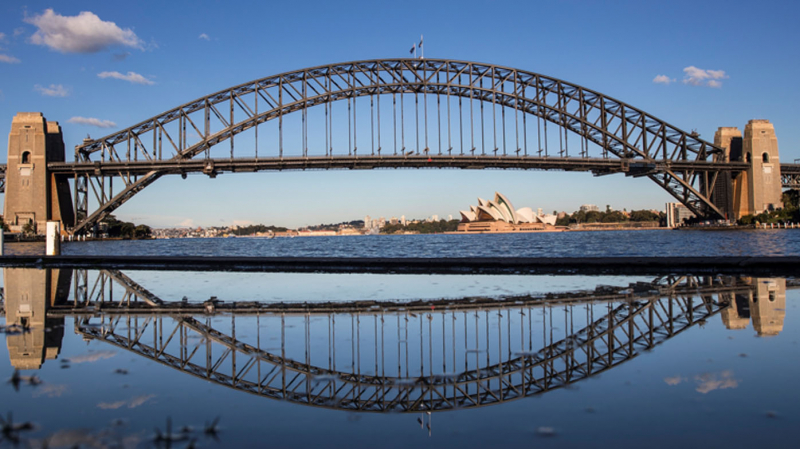
9News 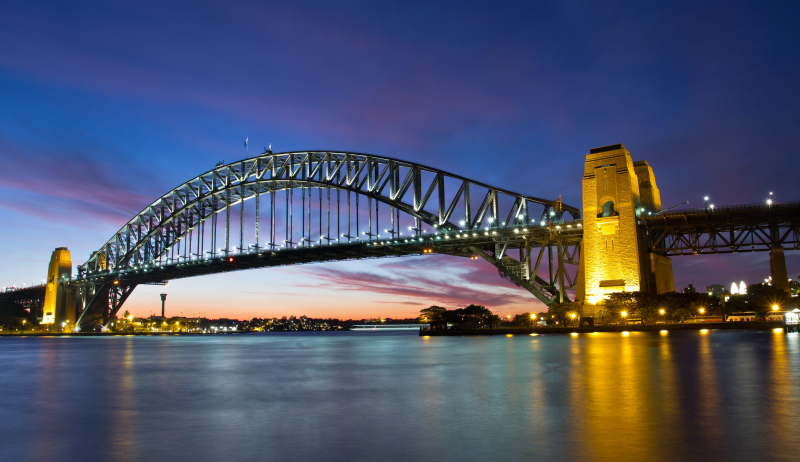
Lonely Planet -
Of all the bridges on our list, the Rialto Bridge is arguably one of the most unique, as well as the most aesthetically complex compared to the more modern, steel-constructed bridges. It sits across the Grand Canal and serves as a historic landmark and popular destination for travelers to Venice, Italy. The Rialto Bridge is also one of the oldest bridges that remains intact and in use by much of the local population.
The brilliant Italian Renaissance painter and sculptor Michelangelo, a native of Venice and a prolific architect throughout the famous era is credited with designing it in the early 16th century, according to historians.
The bridge merely spans the tiny canal for around 104 feet, and its arched design distinguishes it from many other contemporary buildings in use today. It has long been one of the most famous bridges in Europe and has been the subject of numerous paintings, pictures, and films.
Location: Venice, Italy
Architect: Michelangelo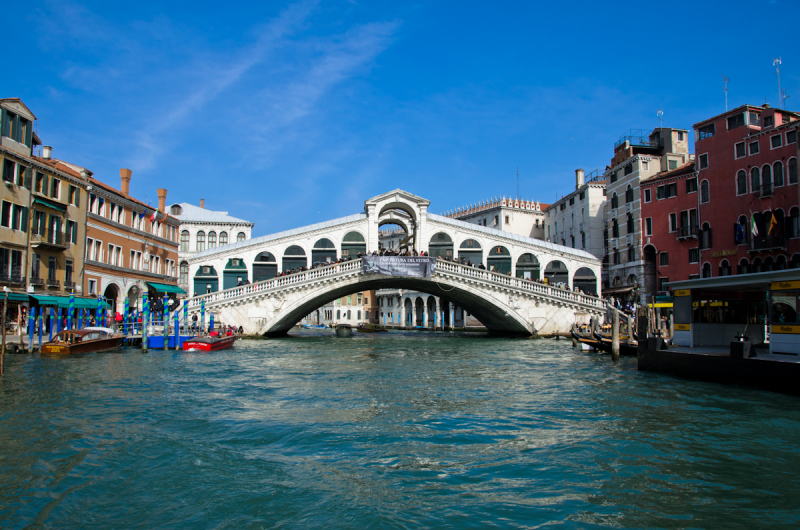
Wikipedia 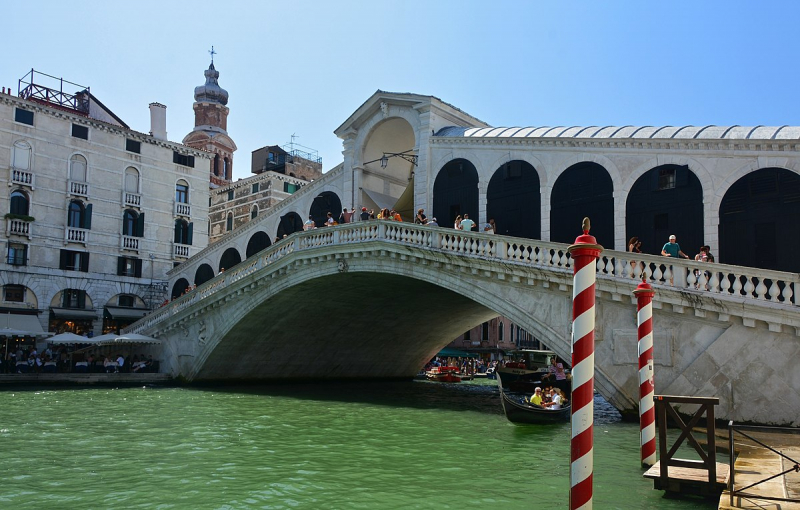
Wikipedia -
Among the most famous and historic bridges in the world, few are more notable than the Charles Bridge, which is located in Prague, Czech Republic. Its medieval design consists of beautiful Bohemian sandstone and was originally designed as a bow bridge with 16 consecutive arches connecting one another across the Vltava river.
The Charles Bridge was designed, according to historians, by Peter Parler in the early 1300s. Parler was a member of one of the most well-known families in Europe who were famous for their design and artistic skills.
The Charles Bridge has more than 30 magnificent statues that are all in the Baroque style, making it one of the most distinctive structures in the world. Since there were few other options for moving the incredibly heavy stone material except backbreaking labor, construction of the bridge, which began in 1357, took decades to finish. After over 50 years of construction and preparation, it was ultimately inaugurated in 1402.
Location: Prague, Czech Republic
Architect: Peter Parle
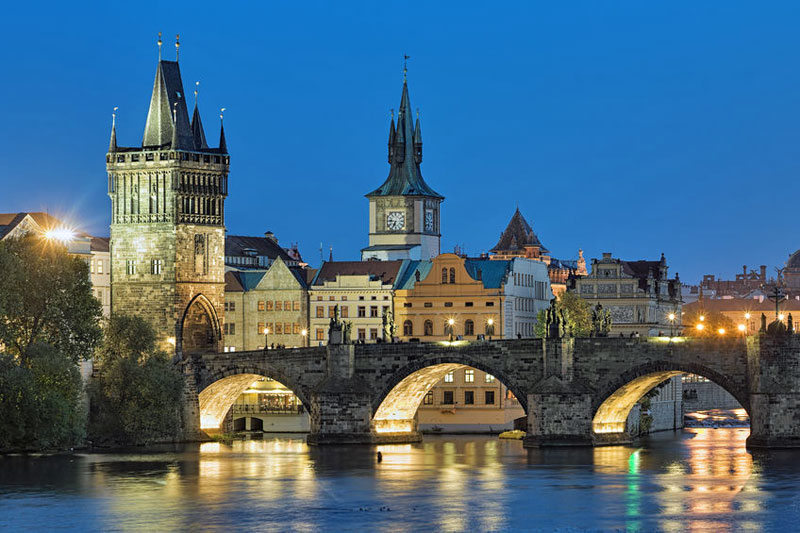
PragueGO 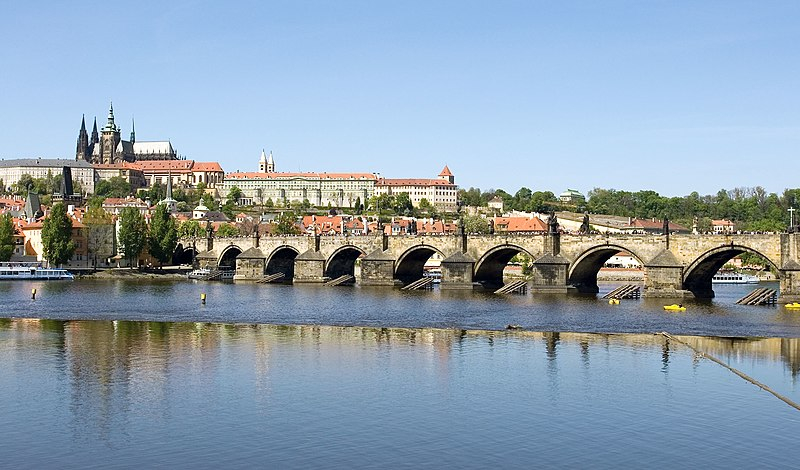
Wikipedia -
Japan’s Akashi-Kaikyo Bridge is another very well known landmark that was built for practical purposes in the late 20th century. It is located in the city of Kobe on the island of Honshu and sits over the famous Akashi Strait, which separates Kobe from Awaji Island. It is the second-longest suspension bridge in the world and the longest in the nation of Japan by thousands of feet.
The bridge was initially designed by Satoshi Kashima in the 1980’s and construction on the project began in 1988. Significant alterations would have to be made following the Great Hanshin earthquake that took place in January of 1995 as the two main towers that were designed to maintain the suspension bridge were moved enough that the central span had to be extended a full meter.
In 1998, the Akashi-Kaikyo Bridge was completed and inaugurated. Up until the 1915 anakkale Bridge in Turkey opened to traffic in 2022, it was the longest suspension bridge in the world.
The Akashi-Kaikyo Bridge has pylons that are 928 feet tall and measures an astounding 6,532 feet in length. Since it was constructed, it has grown to be a popular destination for travelers to Japan, an island nation, with an estimated 23,000 people using it every day.Location: Hyogo 655-0047, Japan
Architect: Satoshi Kashima
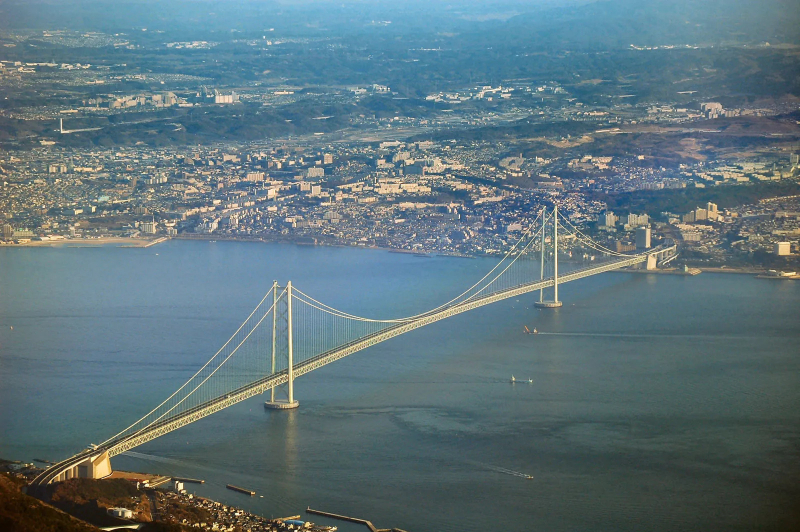
Encyclopedia Britannica 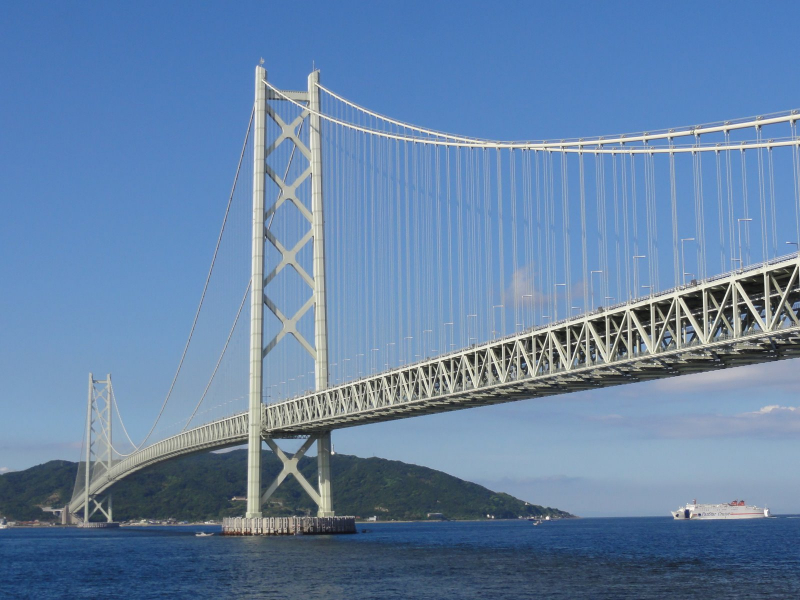
Wikipedia -
Stari Most (“The Old Bridge”) is a famous bridge crossing the river Neretva in the city of Mostar in Bosnia and Herzegovina. It long stood as a symbol of the Ottoman Empire’s dominance in the region and features a significantly middle-eastern style of architecture.
Stari Most is a bridge that was originally designed in the early 16th century by Mimar Hayruddin, who was an Ottoman chief architect and engineer who served under the rule of Sultan Bayezid II. Construction began in 1557 and finished in 1566 and existed as a major trading passage for merchants, travelers, and a host of other types of people during this time period.
Sadly, during the Bosnian War in 1993, Croatian soldiers nearly entirely destroyed the historic bridge. But within a decade, work to restore the historic bridge to its former splendor had already begun.
The recently reconstructed Stari Most bridge was inaugurated in the summer of 2004, and hundreds of people continue to visit the location yearly. The young men of the community regularly dive into the Neretva from the bridge. Only the most experienced and well-trained divers will attempt this due to the extreme cold of the river.Location: Mostar, Bosnia, and Herzegovina
Architect: Mimar Hayruddin
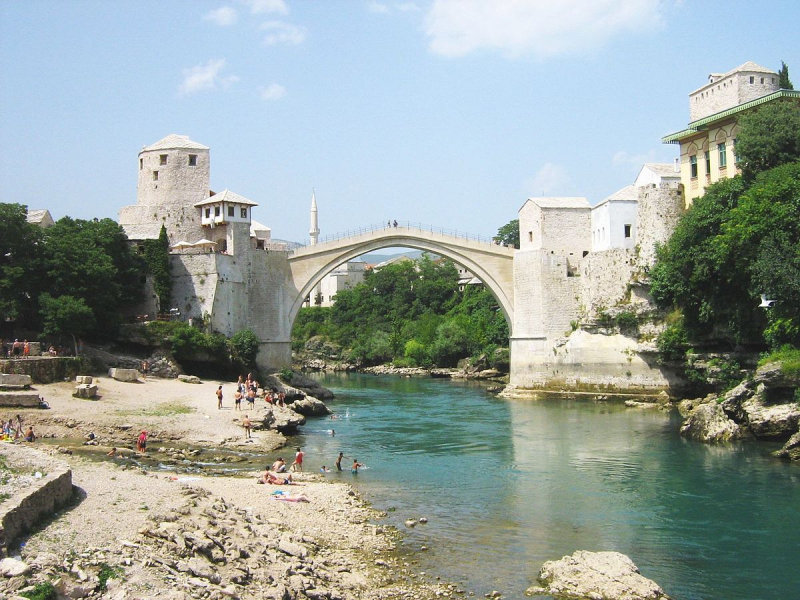
Wikipedia 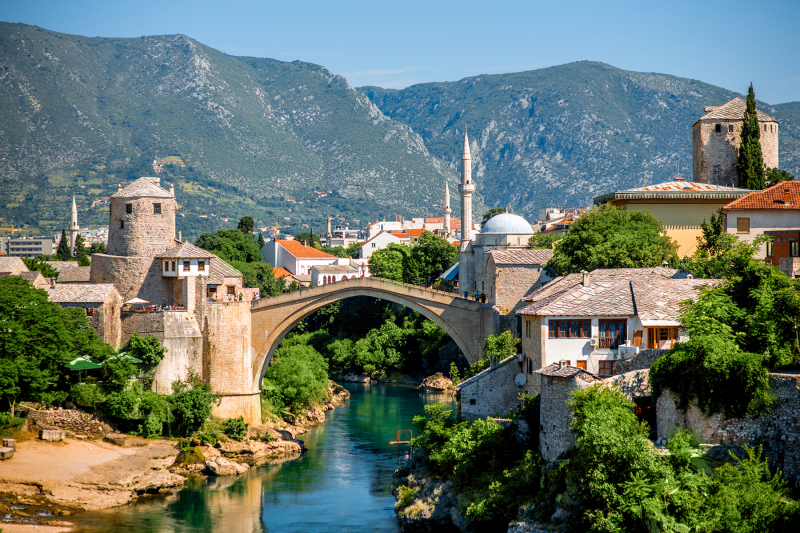
Halal Travel Guide -
Tsing Ma Bridge is a bridge in Hong Kong. It is the world's 16th-longest-span suspension bridge and was the second longest at the time of completion. The bridge was named after the two islands it connects, namely Tsing Yi and Ma Wan. It has two decks and carries both road and rail traffic, which also makes it the largest suspension bridge of this type. The bridge has a main span of 1,377 meters (4,518 ft) and a height of 206 meters (676 ft). The span is the longest of all bridges in the world carrying rail traffic.
The bridge was designed by Mott MacDonald. The firm designed an early iteration of the bridge in 1982, with a two-lane dual carriageway on the top deck, and a light railway on the lower deck. The bridge was redesigned beginning in 1989 to account for the three-lane dual highway and the heavier airport railway. The designers were inspired by the Forth Bridge in Scotland and the Severn Bridge in England.
Due to the frequent strong typhoons that affect Hong Kong, it was put through fairly rigorous wind tunnel testing. The Tsing Ma Bridge, which cost $920 million (HK$7.2 billion), opened in 1997. The bridge does not have any walkways, but it does have covered carriageways on the lower deck for times when extremely high winds are too much for cars to safely navigate. Three lanes in each direction make up the six lanes of car traffic on the 41-meter-wide (135-foot) bridge deck. When unusually powerful typhoons hit Hong Kong and the bridge deck is closed to traffic, the basement level of the structure houses two rail tracks and two covered carriageways that are used for maintenance access and traffic lanes.
Location: Hong Kong, China
Architect: Mott MacDonald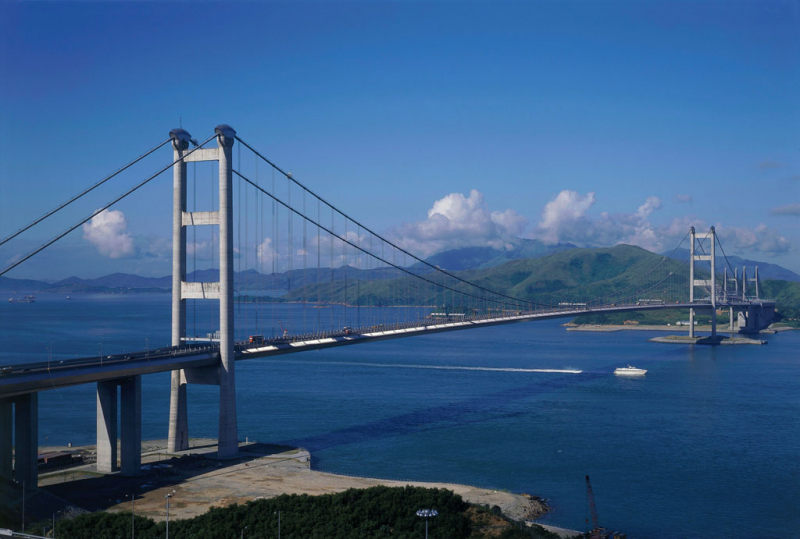
Wikipedia 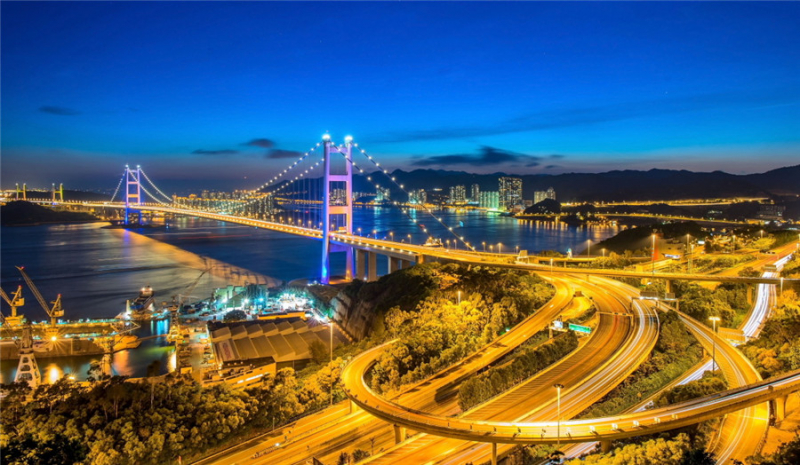
China Dragon Tours -
The Lupu Bridge named after Luwan District, is a through arch bridge over the Huangpu River in Shanghai, China, connecting the city's Huangpu and Pudong districts. It is the world's third-longest steel arch bridge. The bridge has a total length including approach spans of 3,900 m and opened on June 28, 2003. The main bridge structure is 750m long including the two side spans of 100m each, and the main span of 550 meters over the Huangpu River is 32 meters. It cost 2.5 billion yuan (US$302 million), including US$78.04 for the main steel structure alone.
Shanghai Municipal Engineering Design Institute created the Lupu Bridge. The North-South Elevated Road, one of the city's main elevated thoroughfares, has 6 lanes on the bridge, 3 in each direction. From Pudong, drivers can take on-ramps to the North-South Elevated Road that are located either westbound on Yaohua Road or northbound on Jiyang Road. In reality, the North-South Elevated Road comes to a stop right after the Lupu Bridge and becomes Jiyang Road, with an exit for Yaohua Road in the east.
Along the Huangpu River, the Lupu Bridge used to be a well-liked tourist destination. Since visitors could climb to the observation deck at the bridge's summit, the bridge itself doubled as an attraction. The Shanghai Climb attraction required visitors to take a fast elevator to the bridge's base and then ascend 367 steep stairs along the bridge's arch to reach the summit. At the bottom of the Puxi side of the bridge, on Luban Road, was the entrance to the attraction. During the Expo, the observation area offers fantastic views of Shanghai and the Expo 2010 site. Currently (March 5, 2016), the bridge is not open for public viewing.
Location: Shanghai, China
Architect: Shanghai Municipal Engineering Design Institute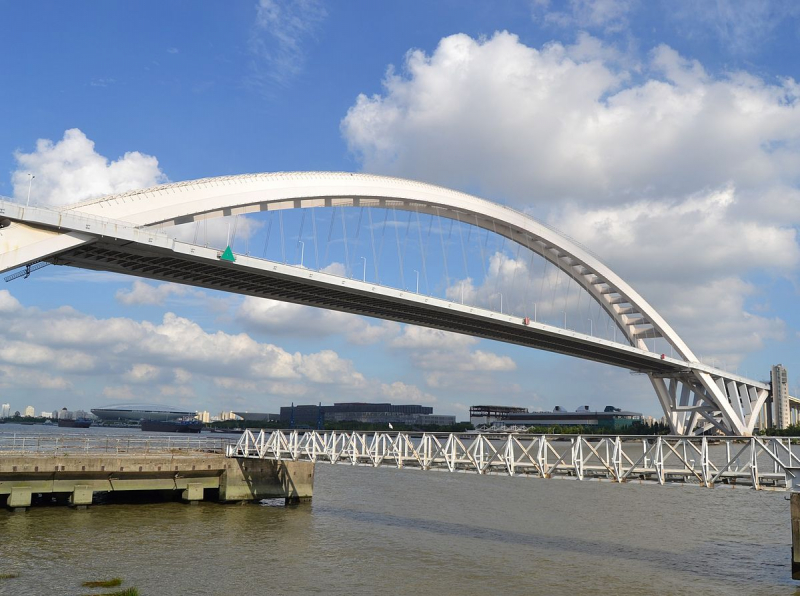
COVE Studio 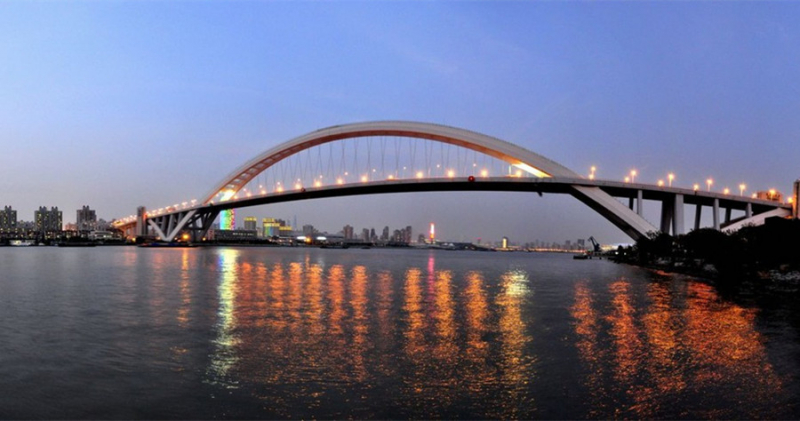
China Dragon Tours -
The Khaju Bridge is one of the historical bridges on the Zayanderud, the largest river of the Iranian Plateau, in Isfahan, Iran. Serving as both a bridge and a weir, it links the Khaju quarter on the north bank with the Zoroastrian quarter across the Zayanderud. It is located at the end of Kamal Ismail Street in Isfahan.
The bridge served a primary function as a building and a place for public meetings in the past. It has been described as the city's finest bridge. According to historians and scholars who have studied the Safavid dynasty, Shah Abbas II's goal in building the Khaju Bridge was to connect the two districts of Khaju and the Hassanabad Gate with Takht-e Folad and Shiraz Road. Tourists who came to Isfahan at different times praised the beauty of the Khaju Bridge and considered it one of the eternal masterpieces of Iranian and Islamic architecture.
The bridge is 133 meters long, 12 meters wide, and has 23 arches. It was used as a teahouse at one time and has tilework and paintings on the walls. The bridge's passageway is constructed of stones and bricks. The length of each stone utilized in the bridge is over two meters, and there are 21 meters between each channel and the base of the ceiling. Under the arches, there are a number of sluice gates that are used to control the Zayanderud's water flow. Horses and carts used the main central aisle on the bridge's upper level, and people used the domed walkways on each side. The lower level of the bridge is accessible to pedestrians and is still a well-liked spot for lounging in the shade.
Location: Isfahan, Iran
Architect: Iranian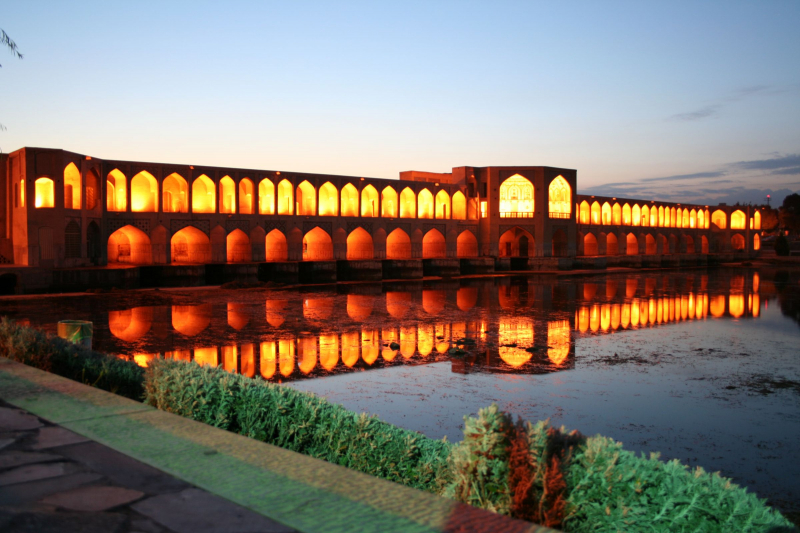
Wikipedia 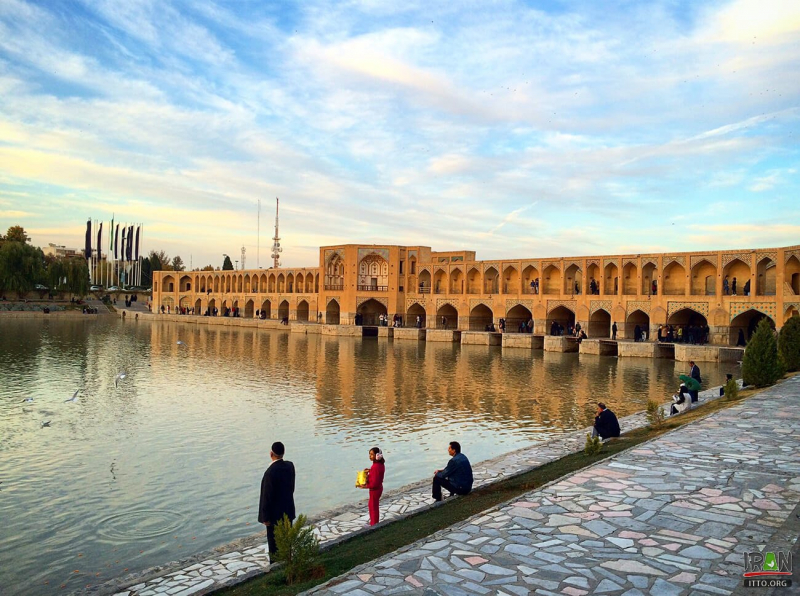
Iran Tourism -
The Helix Bridge is a pedestrian bridge linking Marina Centre with Marina South in the Marina Bay area in Singapore. It was officially opened on 24 April 2010, however, only half was opened due to ongoing construction at the Marina Bay Sands. The bridge was fully opened on 18 July. It is located beside the Benjamin Sheares Bridge and is accompanied by a vehicular bridge, known as the Bayfront Bridge.
About 650 tonnes of duplex stainless steel and 1,000 tonnes of carbon steel were utilized to create the helix, which also helped the bridge take on its helix shape. Construction started in 2007. It was only partially accessible when it was formally launched on April 24, 2010. On July 18, 2010, the full bridge was opened, completing the Marina Bay walkway.
An international team of architects and engineers, including Singapore-based Architects 61 and Australian engineers Arup, created the Helix Bridge. A portion of the inner spiral incorporates canopies for pedestrian shade composed of fritted glass and perforated steel mesh. The bridge features four viewing platforms that are strategically placed and offer views of Marina Bay and the Singapore skyline. The double-helix construction of the bridge will be highlighted by a sequence of lights that illuminate it at night, giving tourists a unique visual experience.Location: Marina Bay, Singapore
Architect: Australian architects, Cox Architecture, engineers Arup, and Architects 61
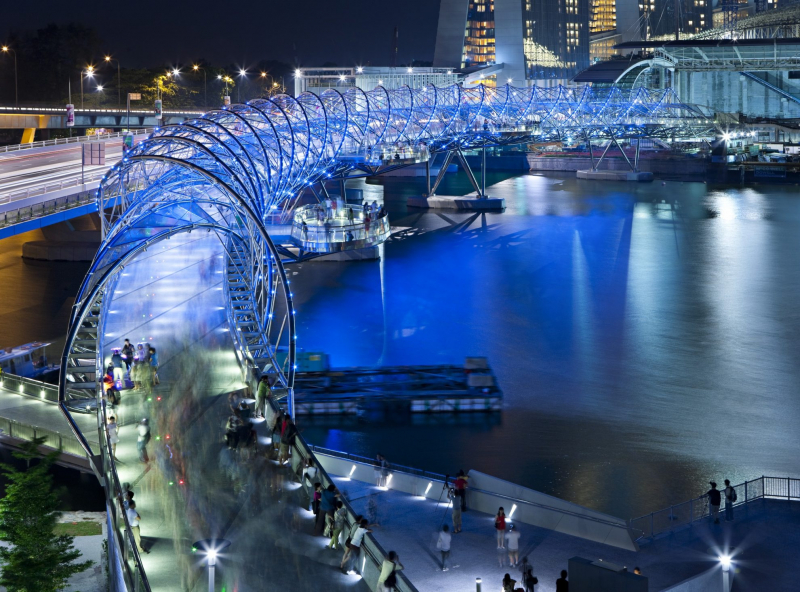
Cox Architecture 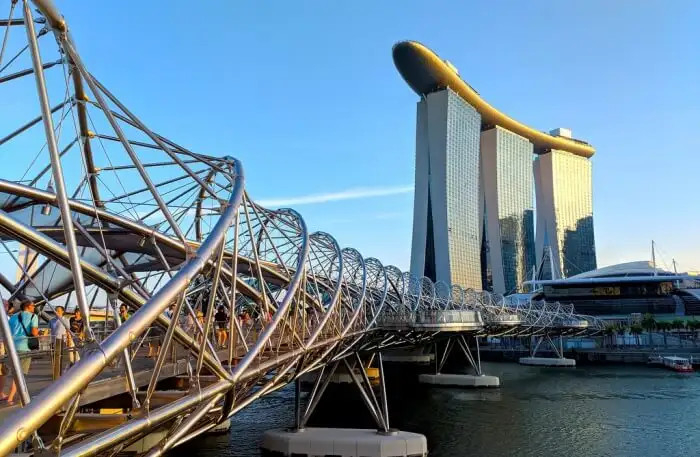
Travel Triangle

















